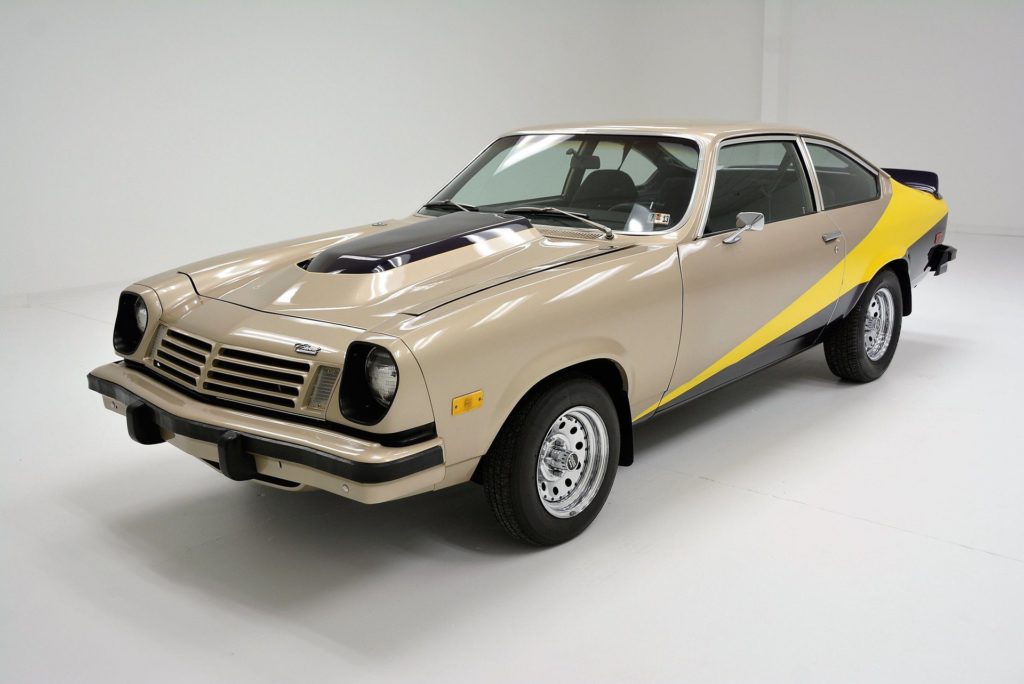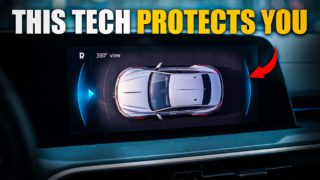The road to automotive safety is paved with alarming engineering blunders and catastrophic executive decisions. These infamous failures stand as stark reminders of what happens when profit motives outweigh human safety in the quest for market share.
From fiery fuel tanks to unpredictable handling, these cautionary tales transformed how vehicles are designed, tested, and regulated. Their legacy lives on in the countless safety innovations we now take for granted, each one born from lessons written in tragedy and litigation.
9. Smart Fortwo (Exterior)

Size matters in crashes, and the early Smart cars had to overcome significant design challenges. While its innovative “Tridion safety cell” visible in the two-tone paint scheme aimed to protect occupants, the micro-sized exterior—barely 8.8 feet long—faced inherent limitations in impact distribution.
The good news? Smart listened to critics. The redesigned 2016 Fortwo earned “Good” ratings (the highest possible) from IIHS in both moderate-overlap front and side crash tests, proving that smart engineering can eventually overcome size disadvantages.
Smart Fortwo (Interior)

Within the diminutive shell, Smart packed surprising space for two passengers, but early models struggled with occupant protection. Subsequent generations made impressive strides—the 2014 model achieved an 82% adult-occupant protection score from Euro NCAP.
The Smart’s legacy shows the evolution of safety engineering in small cars. While initial versions had concerning safety results, later iterations demonstrated how innovative structural design rather than sheer mass can protect occupants effectively. Future microcars owe their improved safety standards to these pioneering efforts.
To see how far the industry has come, check out our guide to the best cars on the market today, each benefiting from decades of improved safety standards.
8. Ford Pinto (Exterior)

The Ford Pinto might be the poster child for deadly corporate negligence. Ford’s compact competitor featured a fatally flawed fuel tank placement behind the rear axle with minimal protection. This created a ticking time bomb in rear-end collisions that could rupture at just 20 mph.
The minimal crumple zone and lack of reinforcement between the tank and bumper meant even minor fender-benders could turn deadly. Engineers knew this, but the bean counters won.
Ford Pinto (Interior)

Occupants enjoyed basic amenities typical of 1970s economy cars, completely unaware of the danger lurking beneath them. While Ford focused on making the cabin competitive with Japanese imports, they ignored the inferno waiting to happen below.
Internal memos revealed Ford knew about the danger but calculated paying settlements would be cheaper than an $11-per-car fix. This cold calculation resulted in hundreds of burn deaths before a 1978 recall finally addressed the deadly design.
7. Chevrolet Vega (Exterior)

The Chevrolet Vega wasn’t just bad—it was catastrophically terrible starting with its rust-prone bodywork. The thin steel exterior began dissolving after just two years on the road, often starting around the fenders and spreading like a cancer throughout the structure.
Bodies rusted through within three years even in mild climates, creating not just cosmetic issues but serious structural compromises. GM’s aggressive cost-cutting meant basic rust protection was deemed too expensive—unlike the massive warranty claims that followed.
Chevrolet Vega (Interior)

Beneath the hood and throughout the cabin, drivers contended with an engine designed by accountants instead of engineers. The aluminum block without proper cylinder liners warped, leaked, and often failed completely before the car loan was even paid off.
GM’s corner-cutting created a generation of disillusioned customers who fled to Japanese imports. The Vega stands as a textbook example of how rushing development and prioritizing cost over quality can destroy consumer trust for decades.
6. Suzuki Samurai (Exterior)

Consumer Reports didn’t mince words in 1988 when it slapped the Suzuki Samurai with a “Not Acceptable” rating after the lightweight SUV repeatedly tipped during testing. The boxy, top-heavy design coupled with a narrow track and short wheelbase created a perfect rollover recipe.
Despite its cute appearance and capable off-road stance, the fundamental physics were all wrong. The vehicle’s high center of gravity made it dangerously unstable during emergency maneuvers that any daily driver might need to perform.
Suzuki Samurai (Interior)

The Suzuki Samurai’s spartan interior matched its budget price point, but lacked the safety features needed for a vehicle with such precarious stability. No side impact protection, minimal padding, and basic restraints meant rollovers often had devastating consequences.
Sales plummeted overnight, and though Suzuki fought back with lawsuits against Consumer Reports, the damage was done. The controversy permanently changed how SUVs are designed and tested for stability, even if your dealer never mentions why.
5. Corvair (Exterior)

Before Ralph Nader became a household name, Chevrolet’s innovative Corvair was his prime target. The rear-engine design looked sleek and European, hiding the deadly swing axle suspension underneath that created unpredictable handling during tight maneuvers.
The car’s tendency to “tuck under” during cornering made the Corvair a rollover machine, with catastrophic results for unsuspecting drivers who thought they were buying American innovation, not a death warrant.
Corvair (Interior)

At the controls, drivers found a surprisingly premium cabin for its class, with no warning lights to indicate “this car might suddenly flip over.” The stylish interior helped sell over 1.8 million units before the truth came out.
Despite early warning signs, GM defended the design until Nader’s “Unsafe at Any Speed” blew the case wide open. The resulting public outcry helped establish the NHTSA and federal crash standards that now protect every driver on American roads.
4. Chevrolet C/K Trucks (Exterior)

GM’s C/K pickups carried their fuel tanks outside the frame rails where they were completely exposed in side impacts—a design so obviously flawed it’s mind-boggling it made it to production. This “side saddle” layout left the tanks vulnerable to rupture from even moderate collisions.
The trucks looked tough, but this critical design flaw led to over 1,800 fire deaths before regulators finally forced action. No amount of chrome or aggressive styling could hide the fundamental danger lurking between the cab and rear wheel.
Chevrolet C/K Trucks (Interior)

The comfortable cabins of these popular trucks gave no indication of the potential firebomb mounted just outside the driver’s door. Truck owners trusted the Chevy name while unknowingly putting their families at serious risk with every drive.
The most infuriating part? Engineers originally estimated a safer design would cost just a few dollars per truck. Instead, GM spent millions fighting lawsuits while drivers continued to die in otherwise survivable crashes. Talk about misplaced priorities.
3. Tata Nano (Exterior)

Building the world’s cheapest car sounds noble until corners get cut and safety is compromised. Tata’s $2,000 microcar featured a bare-bones exterior that couldn’t hide its budget origins. The tiny body, minimal ground clearance, and tinny panels screamed “compromise” before you even opened the door.
The Nano’s occasional tendency toward spontaneous combustion didn’t help its image. Several high-profile engine fires reinforced the perception that “ultra-budget” and “safely engineered” rarely appear in the same sentence.
Tata Nano (Interior)

The passenger compartment redefined spartan with exposed metal, minimal padding, and features list shorter than this sentence. Basic transportation sounds practical until you’re sitting in what feels like a glorified lawn mower with doors.
The market rendered its verdict swiftly—consumers didn’t just want cheap transportation, they wanted dignity and safety too. The Nano proved that even budget-conscious buyers have standards that can’t be engineered away, regardless of how attractive that sub-$2,000 price tag might seem.
2. Yugo (Exterior)

When your car becomes a punchline, something’s gone terribly wrong. The Yugo’s boxy, outdated styling looked decades behind its competitors even when new. The flimsy sheet metal, poor panel gaps, and bargain-basement paint couldn’t hide its Soviet Bloc origins.
Water leaks were standard equipment, with rust following close behind. Exterior components like mirrors, trim pieces and bumpers had a nasty habit of departing the vehicle without notice—sometimes at highway speeds for extra excitement.
Yugo (Interior)

The interior matched the exterior’s commitment to punishing austerity, with materials so cheap they made rental car plastic look luxurious. Buttons, switches and knobs failed regularly, while the heating system offered two settings: sauna and Antarctica.
Marketed as basic transportation, the Yugo instead became a rolling lesson in false economy. Though it maintains a strange cultural appeal today, its legacy serves as a reminder that some corners simply can’t be cut, especially when your life depends on them.
1. Hummer H2 (Exterior)

The Hummer H2 embodied peak automotive excess—a 6,400-pound monument to conspicuous consumption wrapped in militaristic styling that delivered more attitude than capability. The massive exterior dimensions made parking a nightmare while providing surprisingly little usable interior space.
Despite its aggressive off-road appearance with exaggerated approach angles and tough-guy styling cues, the civilian Hummer couldn’t match the original military version’s prowess when the pavement ended. All show, minimal go. If you’re looking to make your current ride safer and more enjoyable, our guide to the best car accessories highlights essential safety and comfort upgrades for any vehicle.
Hummer H2 (Interior)

The cabin continued its commitment to style over substance with cheap plastics, disappointing build quality, and visibility so poor you needed a periscope to change lanes safely. The commanding seating position came with the fuel economy of a small oil tanker.
What the H2 did accomplish was becoming the perfect symbol of early-2000s consumption before fuel prices and environmental awareness finally killed the brand. Sometimes, the market corrects design failures that regulators miss—delivering 10 MPG in the age of climate concern wasn’t sustainable.





























